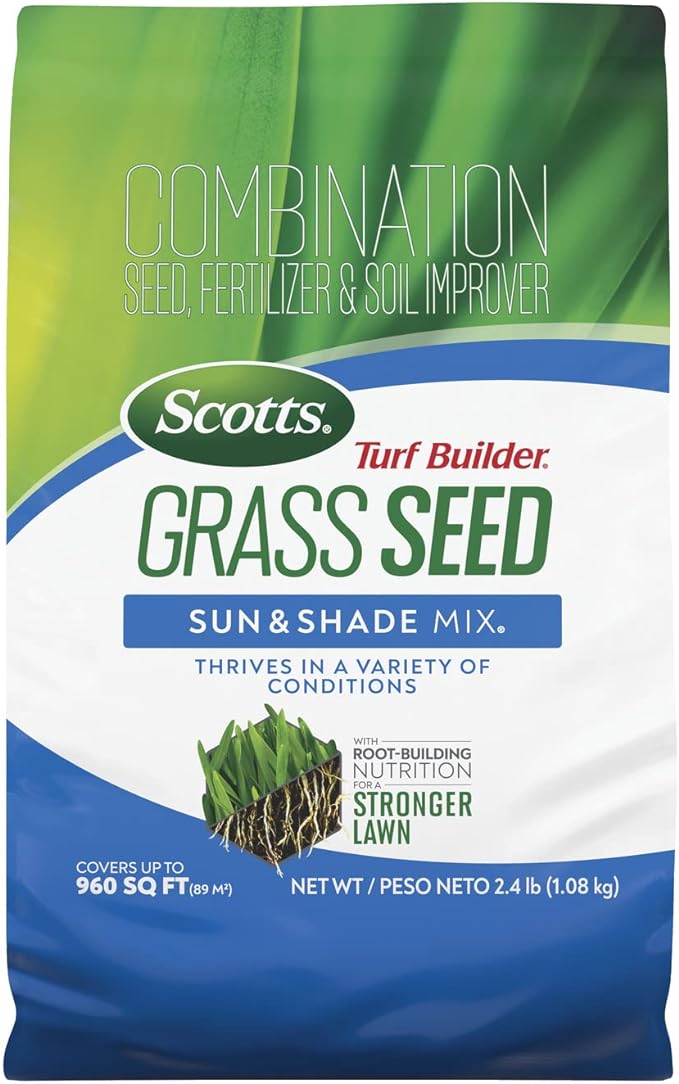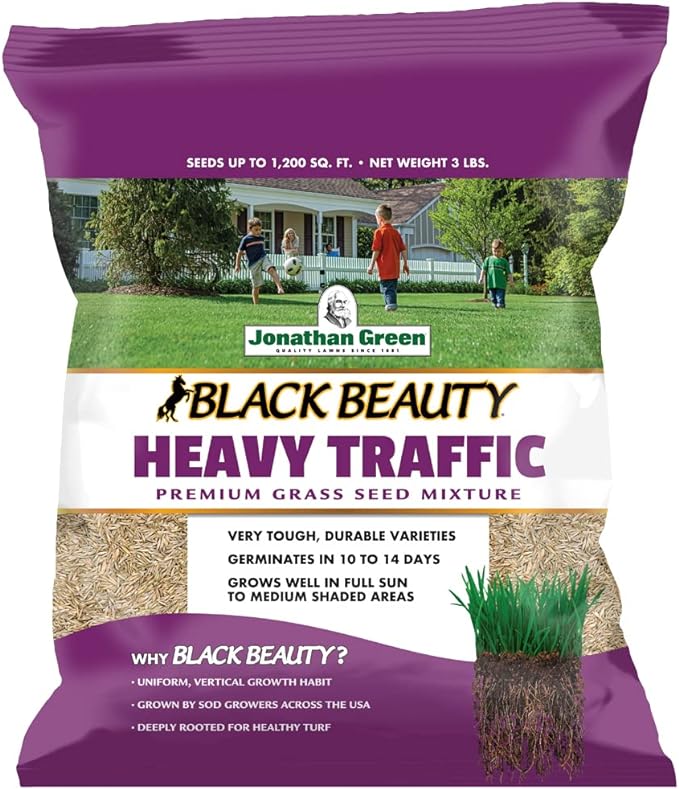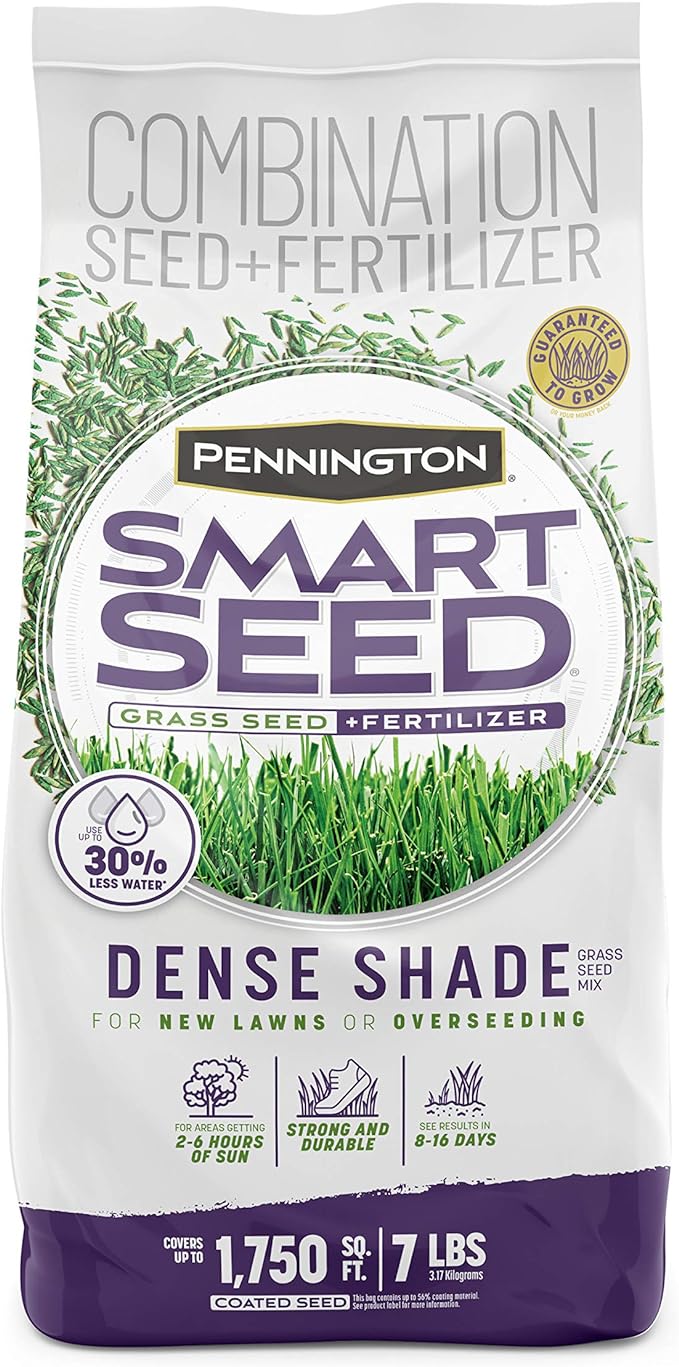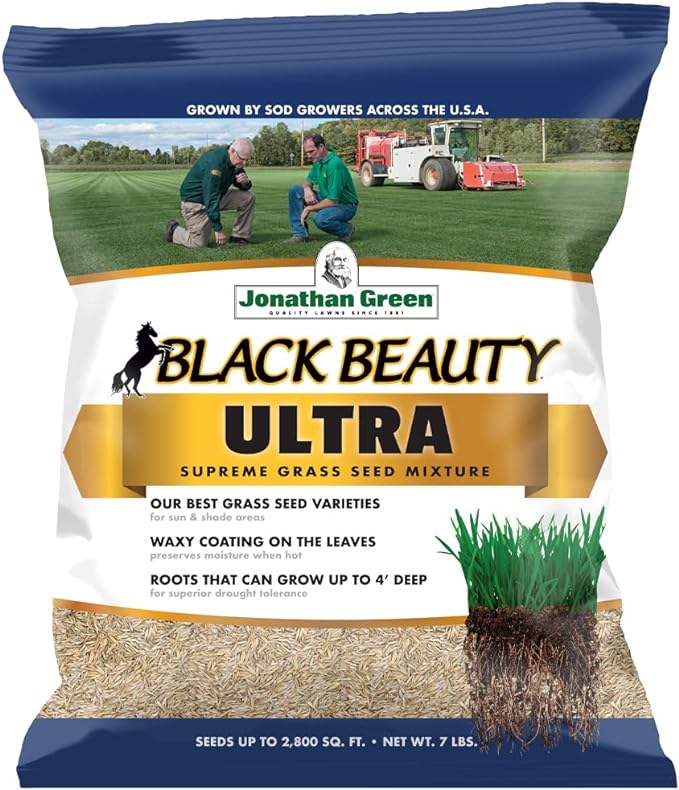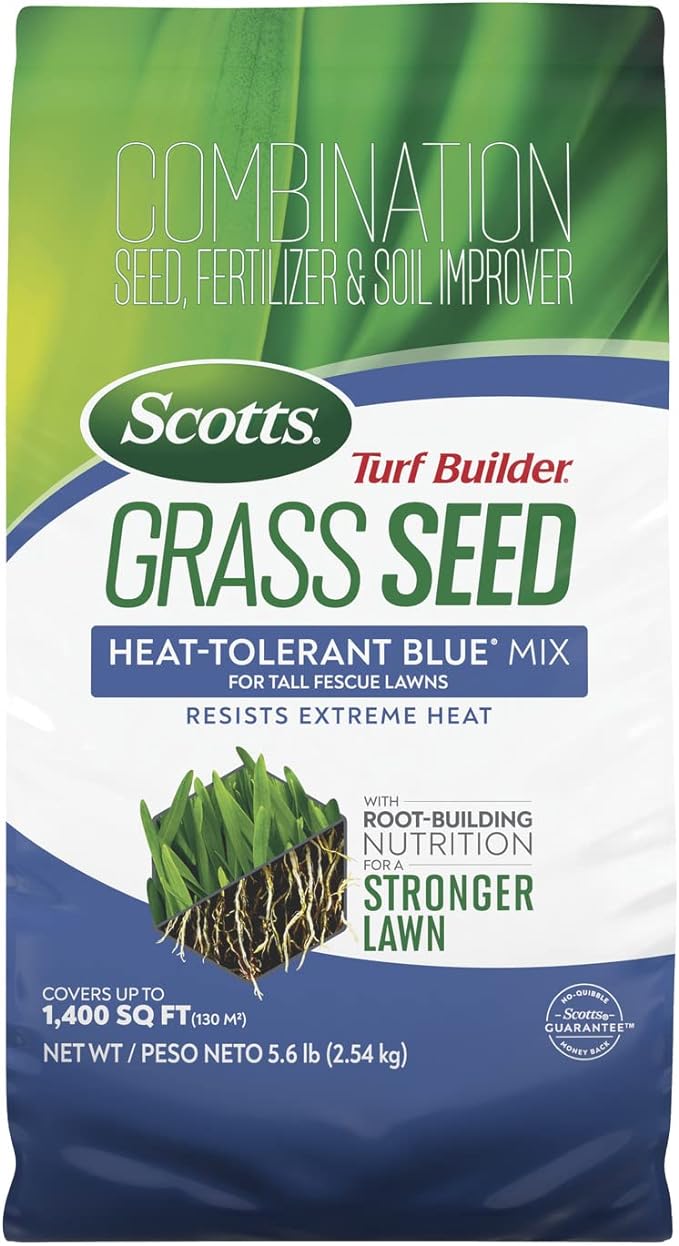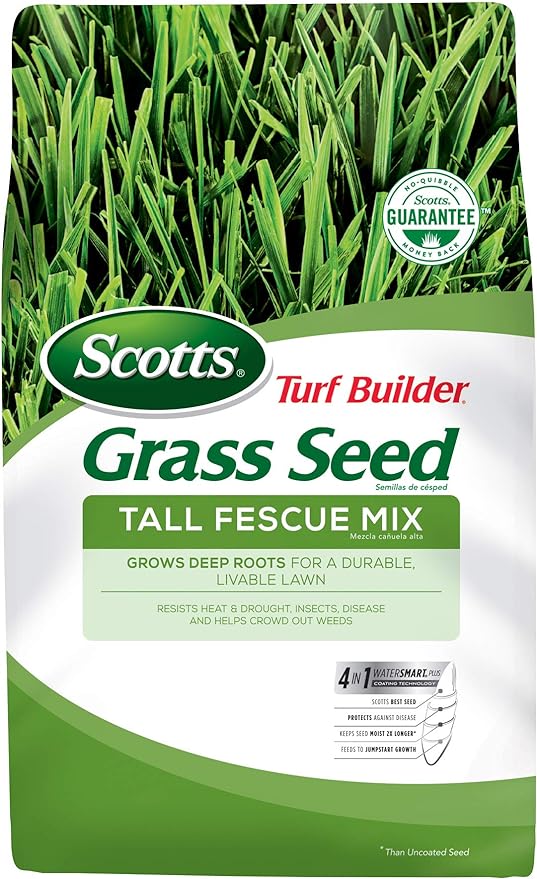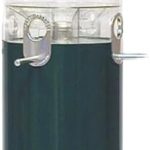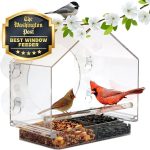As you stand in your yard, gazing out at a lawn that’s less than lush, you can’t help but wonder: what’s the secret to a vibrant, green landscape? You’re not alone in your quest for the perfect grass. With so many seed options available, it’s tough to know where to start. But what if you could tap into the expertise of those who’ve done the research for you? We’ve tested and ranked the top grass seeds on the market, from Bermudagrass to tall fescue, to bring you the inside scoop on what really works. Want to know the top contenders?
Contents
- Scotts Turf Builder Bermudagrass Seed
- Scotts Turf Builder Grass Seed Sun & Shade Mix
- Jonathan Green Black Beauty Heavy Traffic Grass Seed
- Pennington Smart Seed Dense Shade Grass Mix 7 lb
- Jonathan Green Black Beauty Ultra Grass Seed
- Scotts Turf Builder Grass Seed for Tall Fescue Lawns
- Scotts Turf Builder Grass Seed Tall Fescue Mix
- Factors to Consider When Choosing Grass Seeds
- Frequently Asked Questions
- Conclusion
Scotts Turf Builder Bermudagrass Seed
If you’re looking for a grass seed that can thrive in full sun, high-traffic areas, and withstand drought, Scotts Turf Builder Bermudagrass Seed is an excellent choice, thanks to its exclusive 4-in-1 WaterSmart PLUS Coating that absorbs more water, feeds with essential nutrients, and protects seedlings from disease.
This seed is designed for lawns that face the challenges of scorching heat, drought, and bare spots.
You’ll appreciate how it aggressively spreads to fill in bare spots and crowd out weeds, giving you a lush, healthy lawn.
With its drought-tolerant feature, you can rest assured that your lawn will stay green even in harsh conditions.
By following the manufacturer’s instructions and tips from other customers, you’ll be on your way to a beautiful, thriving lawn.
Best For: Homeowners living in hot and dry climates with full sun, high-traffic areas, and lawns with bare spots.
Pros:
- Aggressively spreads to fill in bare spots and crowd out weeds
- Exclusive 4-in-1 WaterSmart PLUS Coating absorbs more water, feeds with essential nutrients, and protects seedlings from disease
- Drought-tolerant feature ensures a lush, healthy lawn even in harsh conditions
Cons:
- May require additional prep work, such as thatching and aerating the lawn, for optimal results
- May not be suitable for lawns with partial shade or low-traffic areas
- No specific information available on the duration of the manufacturer’s warranty
Scotts Turf Builder Grass Seed Sun & Shade Mix
When you need a grass seed that can thrive in both full sun and dense shade, Scotts Turf Builder Grass Seed Sun & Shade Mix is the best choice, providing medium drought resistance and durability for a lush lawn.
This mix is perfect for lawns with varying sunlight conditions, and it’s easy to use and maintain.
With Root-Building Nutrition, your turf will be strong and green.
You can use it for new lawns or overseed existing ones, covering up to 320 sq. ft. for new lawns and 960 sq. ft. for overseeding.
With a 4.3-star rating from over 34,000 customers, you can trust that it works well in a variety of conditions, filling in thick to keep weeds at bay.
Best For: Homeowners with lawns that receive varying amounts of sunlight, including full sun and dense shade, and need a grass seed that can thrive in these conditions.
Pros:
- Easy to use and maintain, with minimal upkeep required
- Can be used for new lawns or overseeding existing ones, covering up to 320 sq. ft. for new lawns and 960 sq. ft. for overseeding
- Contains Root-Building Nutrition for strong, green turf that grows quickly and fills in thick to keep weeds at bay
Cons:
- Requires specific temperature conditions for application (55°F – 70°F soil temperature or 60°F – 80°F air temperature)
- Needs daily watering or as needed to keep the soil surface moist until seedlings reach 2 inches tall
- May not be suitable for extreme drought or high-traffic areas due to medium drought resistance and durability
Jonathan Green Black Beauty Heavy Traffic Grass Seed
For homeowners who need a durable and dense lawn that can withstand heavy foot traffic, Jonathan Green Black Beauty Heavy Traffic Grass Seed is an excellent choice.
This high-traffic grass seed is specifically designed for backyards, sports fields, and curb strips, and it’s suitable for full sun to partial shade areas.
The seed contains tall fescues and perennial rye turfgrass varieties that provide a uniform lawn texture.
Plus, its roots can grow up to 4-feet deep, producing a healthy, dense, and attractive turf with a dark-green color.
With a 3-lb bag, you can seed up to 600 sq. ft. for new lawns or 1,200 sq. ft. for overseeding, and germination takes around 10-14 days.
Best For: Homeowners who need a durable and dense lawn that can withstand heavy foot traffic, particularly for backyards, sports fields, and curb strips.
Pros:
- Provides a uniform lawn texture with tall fescues and perennial rye turfgrass varieties
- Roots can grow up to 4-feet deep, producing a healthy, dense, and attractive turf with a dark-green color
- Suitable for full sun to partial shade areas and can be used for new lawns or overseeding
Cons:
- No specific warranty information is provided
- No specific feedback mechanism is mentioned
- No information is given about the product’s performance in extreme weather conditions
Pennington Smart Seed Dense Shade Grass Mix 7 lb
Looking for a grass seed that can thrive in shady conditions with minimal sunlight?
Pennington Smart Seed Dense Shade Grass Mix 7 lb is an excellent choice, requiring only 2-6 hours of direct sunlight to produce a strong and durable lawn.
This blend of Tall Fescue and Fine Fescue is disease and traffic-resistant, resulting in a lush, green lawn.
You’ll see results in as little as 8-16 days, and it uses 30% less water than ordinary grass seed.
This 7-pound bag covers up to 1,750 square feet for overseeding an existing lawn and 580 square feet for starting a new lawn from scratch.
With 4.1 out of 5 stars and over 2,200 ratings, customers have reported successful growth in shady areas, making this a great option for you.
Best For: Homeowners who want a low-maintenance, disease-resistant, and water-efficient lawn that can thrive in shady areas with minimal sunlight.
Pros:
- Thrives in shady conditions with only 2-6 hours of direct sunlight
- Disease and traffic-resistant, resulting in a strong and durable lawn
- Uses 30% less water than ordinary grass seed and sees results in 8-16 days
Cons:
- Some customers have reported issues with germination rates
- May not be suitable for lawns with full sun exposure
- Limited coverage area of 1,750 square feet for overseeding an existing lawn
Jonathan Green Black Beauty Ultra Grass Seed
With its ability to establish a lush, dark-green lawn in as little as 7-14 days, Jonathan Green Black Beauty Ultra Grass Seed is the best choice for homeowners seeking a quick and attractive turf solution.
You’ll love how it produces healthy, dense, and attractive turf with a dark-green color, thanks to its deep roots that can grow up to 4-feet deep and a waxy leaf coating that retains moisture.
This seed is perfect for establishing new yards or filling in bare spots quickly, and it can withstand heavy traffic.
It thrives in full sun to partial shade, making it ideal for planting in mid-August to mid-October or mid-March to mid-May.
With a 4.4-star rating from 2,979 customers, you can trust that this seed will deliver a beautiful lawn.
Best For: Homeowners seeking a quick and attractive turf solution, particularly those with heavy foot traffic in their yards.
Pros:
- Establishes new yards and fills in bare spots quickly
- Produces healthy, dense, and attractive turf with a dark-green color
- Can withstand heavy traffic and retain moisture with its deep roots and waxy leaf coating
Cons:
- Some customers have reported poor quality and thin grass
- High price point compared to other grass seed products
- May not perform well in extreme weather conditions
Scotts Turf Builder Grass Seed for Tall Fescue Lawns
Resisting extreme heat and drought, Scotts Turf Builder Grass Seed for Tall Fescue Lawns is the best choice for homeowners seeking a durable, low-maintenance lawn that thrives in full sun or partial shade.
You’ll appreciate its Root-Building Nutrition, which promotes strong, green turf.
This seed is perfect for seeding a new lawn or overseeding an existing one, and it’s ideal for application in spring or fall when soil temperatures are between 60°F and 75°F or air temperatures are between 65°F and 85°F.
With a 5.6 lb bag covering 465 sq. ft. for new lawns and 1,400 sq. ft. for overseeding, you’ll get great coverage.
Plus, it’s backed by a 4.2-star rating from over 5,900 customer reviews, with many praising its good germination and healthy grass.
Best For: Homeowners seeking a durable, low-maintenance lawn that thrives in full sun or partial shade.
Pros:
- Resists extreme heat and drought
- Promotes strong, green turf with Root-Building Nutrition
- Can be used to seed a new lawn or overseed an existing one
Cons:
- Some customers have reported poor germination
- Clogged spreader openings have been a problem for some users
- Weeds have been an issue for some customers
Scotts Turf Builder Grass Seed Tall Fescue Mix
If you’re seeking a grass seed that can thrive in full sun and partial shade, Scotts Turf Builder Grass Seed Tall Fescue Mix is an excellent choice, boasting a fine-bladed texture and medium to high drought tolerance.
This product is designed to provide superior heat and drought protection to your lawn.
The 12 in 1 water Smart Plus coating absorbs more water than uncoated seed, feeds your seedlings with essential nutrients, and helps protect them.
You can expect to grow quicker, thicker, and greener grass, guaranteed.
This mix seeds up to 1,750 sq. ft., making it a great option for larger lawns.
With over 9,000 customer reviews and a 4.2-star rating, you can trust that this product will deliver the results you’re looking for.
Best For: homeowners with larger lawns who need a drought-tolerant grass seed that can thrive in full sun and partial shade.
Pros:
- Easy to use and grows quickly
- Good for overseeding and filling in bare spots
- Provides superior heat and drought protection to lawns
Cons:
- Slow germination in some cases
- Not all seeds may germinate
- Coating takes up a significant portion of the product’s weight
Factors to Consider When Choosing Grass Seeds
When selecting the best grass seeds for your lawn, you’ll want to take into account several key factors that impact the health and appearance of your grass.
You’ll need to think about the type of soil you have, the local climate, and how much sunlight your lawn gets.
Soil Type Matters
Considering your lawn’s specific soil type is essential because different grass species thrive in distinct soil conditions, and choosing the right grass seeds for your lawn depends on understanding these nuances.
You need to determine whether your soil is clay, sandy, loamy, or a mix of these. Clay soil, for instance, retains moisture, making it ideal for grasses like buffalo grass or blue grama. Sandy soil, on the other hand, drains quickly, making it suitable for species like Bermudagrass or zoysiagrass. Loamy soil, with its balanced mix of clay, silt, and sand, supports a wide range of grasses.
You should also consider your soil’s pH level, as some grasses prefer acidic or alkaline conditions. For example, Kentucky bluegrass and perennial ryegrass thrive in slightly acidic to neutral soils, while tall fescue tolerates a wider pH range.
Understanding your soil type and its characteristics will help you select the most suitable grass seeds, ensuring a lush, green lawn that’s well-adapted to its environment. By choosing the right grass seeds for your soil, you’ll be on your way to a beautiful, low-maintenance lawn.
Climate Considerations
As you choose the best grass seeds for your lawn, you’ll need to factor in the local climate, which plays a significant role in determining the success of your lawn.
The type of grass that thrives in your area depends on the temperature, humidity, and rainfall levels. If you live in a region with extreme temperatures, you’ll want to opt for drought-tolerant grass seeds with deep roots that can survive with minimal watering. On the other hand, if you’re in an area with high humidity and rainfall, you’ll need grass seeds that are resistant to fungal diseases and can tolerate moisture.
Cool-season grasses like tall fescue and perennial ryegrass are perfect for temperate climates with moderate temperatures and rainfall.
In contrast, warm-season grasses like Bermudagrass and zoysiagrass are better suited for hot and dry climates with intense sunlight.
Sunlight Exposure Needs
You need to assess the sunlight exposure in your lawn area, since it plays a critical role in determining the success of your grass seeds.
Most grass seeds require at least 6 hours of direct sunlight per day, but some shade-tolerant varieties can thrive with as little as 2-4 hours of indirect sunlight.
If your lawn receives 8 hours or more of direct sunlight, full sun grass seeds are your best bet. For areas with 4-6 hours of direct sunlight, partial shade seeds are suitable.
However, if your lawn is shaded, you may need to opt for fine fescue or other deep shade-tolerant seeds that can survive with as little as 1-2 hours of indirect sunlight.
Be aware that some grass seeds, like Bermudagrass, are more sensitive to sunlight and may require more frequent watering and maintenance in areas with high sunlight exposure.
Lawn Size and Shape
When you’ve got the sunlight requirements nailed down, it’s time to measure up your lawn to guarantee you’ve got the right amount of seed to cover every inch.
To do this, you’ll need to calculate the square footage of your lawn by measuring its length and width. Don’t forget to account for any obstacles or irregular shapes that may affect seed coverage.
For smaller lawns, a 1-2 pound bag of grass seed might be enough, while larger lawns may require 5-10 pounds or more.
Consider the shape of your lawn, too. If it’s curved or irregularly shaped, you may need more seed to account for waste and overlap.
Take note of areas with heavy shade, slope, or foot traffic, as these may require specialized seed blends or additional prep work.
Grass Type Preferences
Considering your specific needs and preferences is essential when selecting the best grass seeds for your lawn, as different types thrive in various conditions and serve distinct purposes.
You’ll want to think about the climate you’re in and the amount of sunlight your lawn receives. If you live in a northern climate, cool-season grasses like tall fescue and perennial ryegrass might be the way to go, as they thrive in temperatures between 60°F and 75°F.
On the other hand, if you’re in a southern region, warm-season grasses like Bermudagrass and zoysiagrass are ideal, as they excel in temperatures above 75°F.
You should also consider how much sunlight your lawn gets. If you’ve got partial shade, shade-tolerant grasses like fine fescue and tall fescue can survive with limited sunlight.
Additionally, think about how you plan to use your lawn. If you’ve got kids or pets, or if you plan to use your lawn for athletic activities, you’ll want durable grasses like Bermudagrass and perennial ryegrass.
Drought Tolerance Needed
If your lawn is prone to dry spells or water restrictions, selecting drought-tolerant grass seeds is vital to maintain a lush, thriving lawn year-round.
You’ll want to look for seeds with a high drought tolerance rating, such as those labeled ‘medium to high’ or ‘high’ in drought resistance. Some grass seed varieties, like Bermudagrass, are naturally more drought-tolerant than others, making them a great choice for areas prone to drought.
When selecting drought-tolerant grass seeds, consider factors like soil type, sunlight exposure, and temperature range to confirm the seeds are suitable for your specific climate and lawn conditions.
You may also want to look for seeds with a waxy leaf coating, such as those with a 4-in-1 WaterSmart PLUS Coating, which can retain moisture and reduce evaporation, making them more resistant to drought.
Budget Constraints Impact
Set a realistic budget before selecting grass seeds, as the cost can quickly add up, ranging from $10 to $50 or more per pound depending on the type and brand you choose.
You’ll need to weigh the benefits of high-quality seeds against the cost, as premium options like Bermudagrass or zoysiagrass tend to be pricier than more common types like tall fescue or ryegrass.
If you’re on a tight budget, you may need to opt for a lower-cost seed option, which might compromise on quality, germination rates, or disease resistance.
However, keep in mind that inadequate coverage due to budget constraints can lead to thin or bare spots in your lawn.
It’s essential to factor in the long-term benefits of investing in high-quality seeds, such as reduced maintenance and improved durability.
While the upfront cost might be higher, it can pay off in the long run.
Frequently Asked Questions
Can I Mix Different Types of Grass Seeds for a Lawn?
You’re wondering if mixing different grass seeds is a good idea. Yes, you can mix them, but be cautious, as different seeds have varying growth rates, textures, and sun requirements, which might affect your lawn’s overall appearance.
How Often Should I Water My Lawn After Seeding?
You’ll want to keep the soil consistently moist during the germination period, watering lightly but frequently, about 2-3 times a day, to promote successful seed establishment and healthy growth.
Will Grass Seeds Grow in Areas With Standing Water?
You’re wading through a swampy nightmare, with water lilies blooming in your lawn. Unfortunately, grass seeds won’t grow in areas with standing water, as they need oxygen and dry soil to germinate and thrive.
Can I Overseed My Lawn in the Fall or Spring?
You’re wondering if you can overseed your lawn in the fall or spring. Yes, you can! Both seasons are ideal for overseeding, as the cooler temperatures and increased moisture promote healthy germination and establishment.
Do I Need to Aerate My Lawn Before Seeding?
Savoring the sweet spot in lawn care, you’re wise to wonder: do you need to aerate before seeding? Yes, you should, as aeration loosens compacted soil, allowing seeds to breathe, germinate, and grow strong.
Conclusion
You’ve made it to the end of our grass seed roundup!
Now, it’s time to put your newfound knowledge to the test.
Remember, the perfect grass seed for you depends on your climate, lawn type, and personal preferences.
Don’t be afraid to experiment and find the best fit for your outdoor oasis.
After all, a lush, green lawn is just a seed away!

